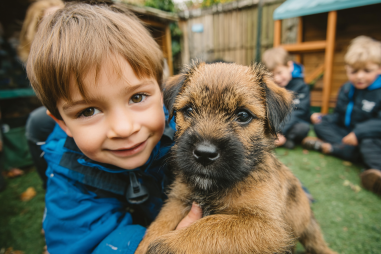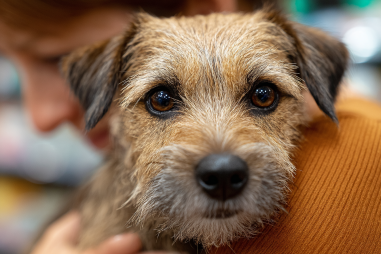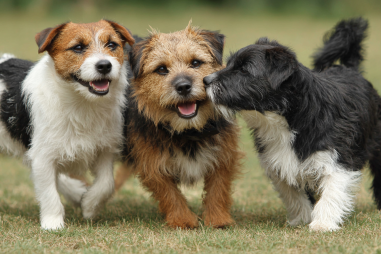Owning a Border Terrier is a rewarding experience filled with boundless energy, affectionate moments, and a loyal companion. However, like any breed, Border Terriers have specific needs that, when met, ensure they live happy and healthy lives. Understanding these needs and incorporating them into your daily routine will set you and your furry friend up for success. Whether this is your first Border Terrier or you’re seeking to improve your current care regimen, these ten essential care tips will guide you in providing the best for your dog.
Understanding Border Terrier Characteristics
Before diving into care tips, it’s important to recognize what makes Border Terriers unique. Originally bred to hunt foxes and vermin in the border region between England and Scotland, Border Terriers are small but muscular dogs with a wiry coat and expressive eyes full of intelligence. They are known for their affectionate nature and tenacity, but they also possess a high prey drive and can be quite energetic. Their friendly disposition makes them excellent family companions, but they do require thoughtful care to meet their physical and mental needs. Knowing these characteristics helps tailor your approach to feeding, exercise, training, and health care.
Daily Care Routines: Feeding, Grooming, and Exercise
Establishing consistent daily routines is the foundation of good Border Terrier care. Their active nature demands balanced nutrition, regular grooming, and plenty of exercise.
Feeding
Feeding your Border Terrier a nutrient-rich diet tailored to their age, weight, and activity level is crucial. Most adult Border Terriers thrive on high-quality commercial dog food formulated for small to medium active breeds. You should divide their daily food intake into two meals to prevent overeating and maintain stable energy levels. Always provide fresh water throughout the day. Avoid overfeeding as Border Terriers can easily gain excess weight, which leads to health problems.
Grooming
Border Terriers have a dense, wiry coat that requires regular maintenance to stay clean and healthy. Brushing their coat two to three times per week will reduce matting and remove loose hair. Hand stripping, which means plucking the dead hair by hand or with a stripping tool, is recommended every few months for show dogs or optimal coat health. Bathing should be done only as needed, as too frequent washing can strip natural oils. Also, attend to their nails by trimming them regularly, clean their ears to avoid infections, and brush their teeth several times a week to maintain oral health.
Exercise
Exercise is vital for this energetic breed. Border Terriers need at least one hour of vigorous activity daily, which can include walks, playtime, agility exercises, or off-leash runs in a securely fenced area. Since they have a strong prey drive, never let them off-leash near wildlife or unsecured spaces unless you are confident in their recall. Mental and physical exercise combined helps prevent boredom and destructive behaviors.
Health Monitoring and Common Issues
Regular veterinary care and health observation keep your Border Terrier thriving. These dogs are generally healthy but can be prone to specific conditions, so vigilance is key.
- Hip Dysplasia: A genetic condition affecting joint health, which can cause arthritis and mobility issues.
- Heart Issues: Some Border Terriers develop heart murmurs or other cardiac problems.
- Allergies: They may experience skin allergies requiring specialized care.
- Eye Conditions: Issues like cataracts or progressive retinal atrophy can affect seniors.
Schedule annual veterinary check-ups, keep up with vaccinations, and monitor your dog’s behavior and physical condition daily. Look for signs like limping, excessive scratching, changes in appetite or bathroom habits, coughing, or lethargy. Prompt attention can prevent minor issues from becoming serious.
The Importance of Mental Stimulation
Border Terriers are intelligent and curious, thriving on mental challenges. Providing adequate mental stimulation is just as important as physical exercise to prevent boredom, which can lead to destructive or noisy behavior.
Interactive toys, puzzle feeders, obedience training, and agility courses are excellent ways to engage their minds. Teaching new commands or tricks regularly also helps keep your Border Terrier sharp and emotionally satisfied. Incorporating scent games, where they use their natural hunting instincts, can be particularly enjoyable and rewarding for the breed.
Socialization and Training Basics
Early and ongoing socialization is essential for Border Terriers to develop confidence around people, animals, and new environments. Introduce your puppy or new dog gradually and positively to different sights, sounds, and situations. This reduces fearfulness and aggression later in life.
Training your Border Terrier requires patience and consistency. They respond best to positive reinforcement methods such as treats, praise, and play. Avoid harsh discipline as it can damage your bond and provoke stubbornness. Begin with basic obedience commands—sit, stay, come—and gradually introduce leash training, recall, and off-leash control. Address any behavioral issues early, particularly their tendency to chase small animals or dig, by redirecting these instincts safely.
Creating a Safe Home Environment
Ensuring your home and yard are secure and dog-friendly helps protect your Border Terrier from accidents and escape. This breed is curious and agile and can slip through small gaps or dig under fences, so effective barriers are a must.
- Remove toxic plants, chemicals, and small objects that could be swallowed.
- Provide comfortable bedding and a quiet space for rest.
- Use gates to restrict access to hazardous areas.
- Supervise interactions with small children or other pets initially.
Safe toys and chew items should always be available to discourage destructive chewing of household items. Regularly inspect your yard for holes or potential hazards.
Giving Your Border Terrier the Best Life Possible
Caring for a Border Terrier involves meeting their unique physical, emotional, and social needs. Staying attentive to their health, engaging them through exercise and mental challenges, and nurturing a trusting relationship through training and socialization will reward you with a loyal, joyful companion. Remember to adapt your care as your dog ages and their needs change. Providing a structured, loving environment ensures your Border Terrier will thrive for many years to come.







